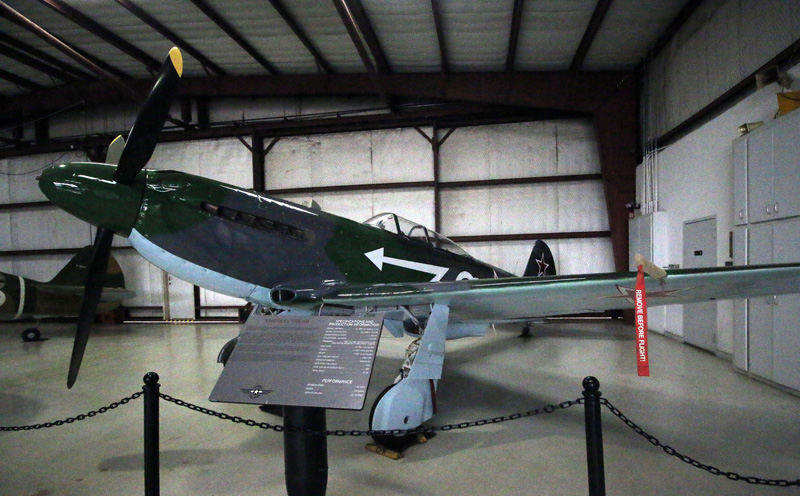| Yakovlev | |||
|
Yak-3 |
|||
 |
|||
|
Photo:
Robert Deering 5/27/2017 Cavanaugh Flight Museum Addison Airport (ADS) Addison, Texas |
|||
|
The Yakovlev Yak-3 was
a World
War II Soviet fighter
aircraft.
Robust and easy to maintain, it was very
much liked by pilots and ground crew alike. It
was one of the smallest and lightest major
combat fighters fielded by any combatant
during the war. Its high power-to-weight
ratio gave it excellent performance. It
proved a formidable dogfighter. Marcel
Albert,
World War II French ace, who flew the Yak in USSR with
the Normandie-Niémen Group,
considered it a superior aircraft when
compared to the P-51D Mustang and
the Supermarine Spitfire. After the war
ended, it flew with the Yugoslav and Polish
Air Forces.
The new aircraft began to reach front line
units during summer 1944. Yak-3 service
tests were conducted by 91st IAP of the 2nd
Air Army, commanded by Lt Colonel Kovalyov,
in June–July 1944. The regiment had the task
of gaining air superiority. During 431
missions, 20 Luftwaffe fighters and three Ju
87s were shot down while Soviet losses
amounted to two Yak-3s shot down. A
large dogfight developed on 16 June 1944,
when 18 Yak-3s clashed with 24 German
aircraft. Soviet Yak-3 fighters shot down 15
German aircraft for the loss of one Yak
destroyed and one damaged. The following
day, Luftwaffe activity over that section of
the front had virtually ceased. On
17 July 1944, eight Yaks attacked a
formation of 60 German aircraft, including
escorting fighters. In the ensuing dogfight,
the Luftwaffe lost three Junkers
Ju 87s and
four Bf 109Gs, for no losses to the Yaks. Consequently,
the Luftwaffe issued an order to "avoid
combat below five thousand metres with
Yakovlev fighters lacking an oil cooler
intake beneath the nose! Luftwaffe fighters
in combat with the Yak-3 tried to use
surprise tactics, attacking from above.
Unresolved wartime problems with the Yak-3
included plywood surfaces
coming unstuck when the aircraft pulled out
of a high-speed dive. Other
drawbacks of the aircraft were short range
and poor engine reliability. The pneumatic
system for actuating landing
gear, flaps and
brakes, typical for all Yakovlev fighters
of the time, was problematic. Though less
reliable than hydraulic or electrical
alternatives, the pneumatic system was
preferred owing to significant weight
savings.
In 1944, the Normandie-Niemen Group
re-equipped with the Yak-3, scoring with it
the last 99 of their 273 air victories
against the Luftwaffe. Source: Wikipedia |
